Coffee lovers often find themselves curious about coffee beans’ variety and distinct character. This article provides insight into the four primary types of coffee beans: Arabica, Robusta, Liberica, and Excelsa. While Arabica and Robusta beans are widely recognized and preferred by many, Liberica and Excelsa are less common but offer unique flavors that can be a delightful discovery. Continue reading to deepen your understanding of these exquisite beans and gain valuable advice for selecting the best coffee.
What are Coffee Beans?

The coffee bean, originating from the Coffea plant, is the foundation for coffee. Encased within the vibrant red or purple drupe, commonly known as a coffee cherry, the bean is analogous to the pit found in stone fruits.
Following the meticulous harvesting of these seeds, the ensuing phase involves fermentation and roasting—a critical step that meticulously extracts moisture and cultivates a distinctive flavor profile intrinsic to each bean.
Subsequently, these expertly roasted beans are poised to be transformed into culinary delights. Whether finely ground to brew a refreshing morning beverage or incorporated into the rich layers of a classic Tiramisu, the versatility of coffee beans is boundless.
Where do coffee beans come from?

Coffee plants, which resemble bushy shrubs and can grow quite tall, are typically pruned by farmers to a manageable height of approximately 5 feet. These plants produce clusters of cherries, each containing two coffee beans.
Typically, it takes a coffee plant about one year to produce its first aromatic white blossoms. It may take an additional four years before the plant starts to yield fruit.
Nevertheless, it usually takes a decade before these plants achieve a level of production suitable for commercial purposes, which is when the beans are most valuable to the farmers.
The average coffee plant has a productive lifespan of 30 to 40 years, though with meticulous care, some plants can thrive even longer.
Harvesting the beans optimally is crucial, as the cherries must reach a ripe red hue. Expertise is required to determine the precise moment for harvesting since the timing significantly influences the beans’ ultimate flavor profile.
Where is coffee grown?

Most coffee crops are cultivated within the equatorial zone known as the “Coffee Belt,” delineated by the Tropic of Cancer and the Tropic of Capricorn.
This region is the heartland of global coffee production, encompassing countries renowned for their coffee output, including Brazil, Vietnam, Colombia, Indonesia, and Ethiopia. These nations provide the ideal conditions for the optimal growth of coffee plants.
The provenance of coffee beans can significantly influence their flavor profile. Factors such as local climate, altitude, and soil composition are critical in shaping the distinctive taste characteristics of the coffee that these beans yield.
The 4 Different Types of Coffee Beans
| # | Type of Coffee Bean | Origin & Popularity | Growth Conditions & Plant Size | Taste Profile | Where to Buy |
|---|---|---|---|---|---|
| 1 | Arabica | Common in blends are unique Robusta blends from gourmet roasters, Vietnamese suppliers, and instant coffee. | Needs shade, water, and a high altitude (at least 2,000 feet). More susceptible to disease. 8-15 feet tall plants. | Smooth, complex flavor, lack of bitterness. Tasting notes vary from earthy to floral, depending on origin. | Widely available, especially from gourmet coffee companies. Ensure it’s not blended with Robusta. |
| 2 | Robusta | It originated in sub-Saharan Africa. It is grown primarily in Africa, Indonesia, and Vietnam. It’s the second most popular type. | Hardier can grow at lower altitudes, recently been found to be less heat-resistant. They are 15-20 feet tall plants. | Harsher, more bitter taste, strong smell, flat or burnt taste. Higher caffeine content. | Native to central and western Africa, specifically Liberia. She gained prominence in Southeast Asia after a fungal disease. |
| 3 | Liberica | Hardier can grow at lower altitudes and has recently been found to be less heat-resistant. They are 15-20 feet tall plants. | Larger plant than Arabica or Robusta. Tolerates hot, humid climates well and does well at low altitudes. | Piquant floral aroma, bold, smoky flavor. It can be nutty and woody or unpleasant to some palates. | Once considered a separate species, it is now classified as a Liberica variant mainly grown in Southeast Asia. |
| 4 | Excelsa | Once considered a separate species, it is now classified as a Liberica variant mainly grown in Southeast Asia. | It grows on large 20- to 30-foot plants at medium altitudes. | Unique taste combining traits of light and dark roasts, tart, and fruity with deep flavors. Low on aroma and caffeine. | Specialty roasters like Len’s Coffee in Asia and possibly other specialty shops. |
Arabica Coffee Beans (Coffea arabica)

Arabica coffee beans are the world’s predominant coffee variety, constituting approximately 60% of global production. These beans boast a rich history, tracing their origins to the ancient highlands of Ethiopia—a region that may have pioneered coffee consumption. The designation ‘Arabica’ is believed to derive from the bean’s historical acclaim in 7th-century Arabia, now known as Yemen.
However, Arabica beans present agricultural challenges; they require specific conditions to flourish, contributing to their higher market price.
The cultivation of all coffee beans is confined to the ‘Bean Belt’—a zone demarcated by the Tropics of Cancer and Capricorn, spanning 50 nations. Arabica beans, in particular, necessitate a combination of ample shade, abundant water, and elevated altitudes for optimal growth.
Prone to disease, these plants must be cultivated at a minimum altitude of 2,000 feet. Arabica coffee plants are relatively small, with mature heights ranging from 8 to 15 feet.
What do they taste like?

Renowned for their superior quality, gourmet coffee purveyors often boast of exclusively incorporating 100% Arabica beans. Esteemed for their smooth and intricate palate profile, these beans also possess a notable absence of bitterness, elevating them above other varieties.
The sensory experience offered by Arabica beans is remarkably diverse, influenced heavily by their geographic cultivation.
Each origin presents a unique bouquet of flavors, from the rich, soil-touched tones of Indonesian harvests to Ethiopian yields’ delicate, aromatic essence.
For an extraordinary coffee experience, connoisseurs should seek single-origin Arabica beans, which promise to delight and surprise the senses.
Where can you buy Arabica beans?
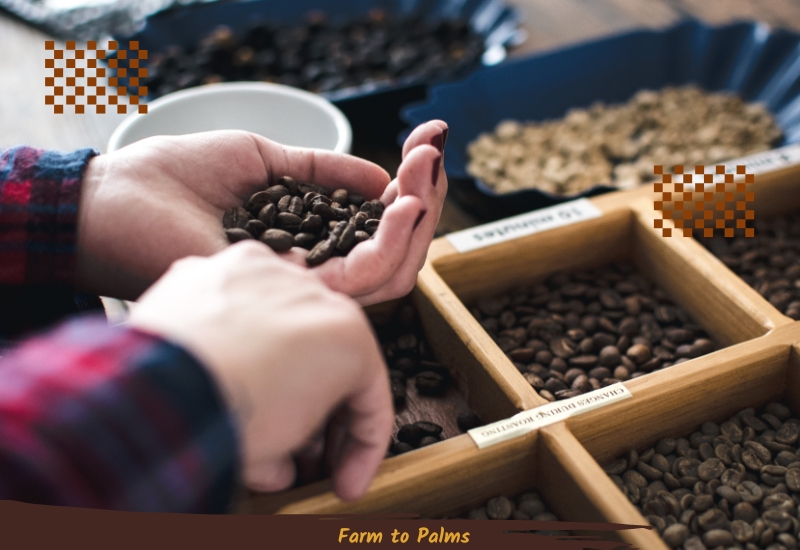
Purveyors of fine coffee extensively offer Arabica coffee beans. For those seeking to experience the distinct taste of Arabica, it is imperative to inspect the packaging to confirm that the beans are not adulterated with Robusta, the secondary variant.
Robusta Coffee Beans (Coffea canephora)

Robusta coffee beans, the second most prevalent variety after Arabica, originate in sub-Saharan Africa. They are predominantly cultivated across Africa and Indonesia, with a notable presence in Vietnam, where they are frequently incorporated into various coffee blends. Due to their lower cost, Robusta beans present an economically advantageous option for coffee roasters.
Compared to other coffee bean varieties, Robusta beans are distinguished by their larger size and rounded shape. The Robusta plant can attain heights ranging from 15 to 20 feet, surpassing the stature of Arabica plants.
Traditionally celebrated for their resilience, Robusta plants thrive at lower elevations and possess robust disease resistance. However, recent studies have cast doubt on their ability to withstand high temperatures, challenging the previously held belief in their heat tolerance.
What do they taste like?
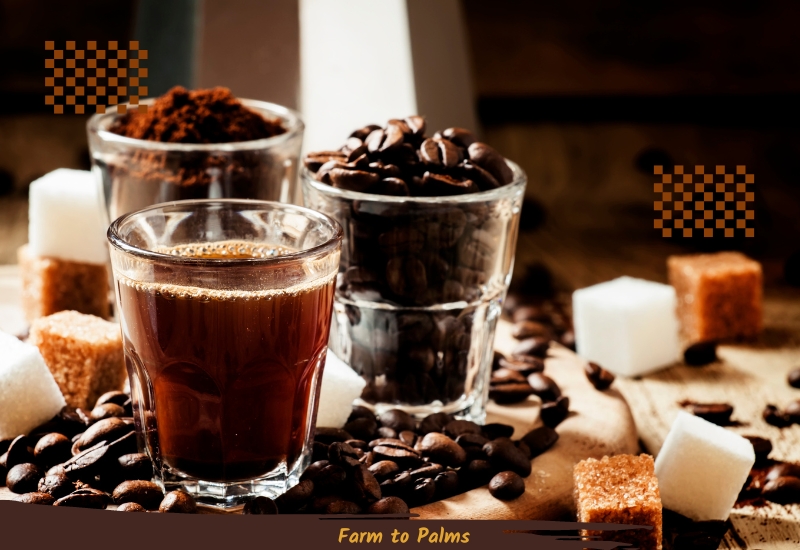
Numerous individuals perceive Robusta coffee to possess a more pronounced bitterness and astringency, accompanied by a potent aroma and a taste that can be described as robust, with hints of char. Notably, Robusta beans contain a higher caffeine content than their Arabica counterparts.
Despite the skepticism from connoisseurs of fine coffee towards Robusta, it is worth exploring its unique profile periodically. Our recent tasting experience, courtesy of the Angels’ Cup coffee subscription, introduced us to an exceptional Robusta variety from Thailand. These distinctive beans delivered a palate of earthy notes and exotic spices, remarkably devoid of bitter aftertaste.
Where can you find Robusta beans?
Robusta coffee beans are readily available due to their frequent inclusion in various blends. Specialty roasters occasionally curate exclusive Robusta selections, and one can explore offerings from purveyors such as Len’s Coffee, Trung Nguyen Legend, which specializes in Vietnamese variants. Additionally, it is noteworthy that instant coffee formulations are predominantly composed of Robusta beans.
Liberica Coffee Beans (Coffea liberica)

Originating from the central and western regions of Africa, particularly Liberia, Coffea liberica is esteemed for its distinctive floral scent and robust, smoky taste.
This resilient coffee species enhances the richness and complexity when blended with other coffee types, yet it often needs to be recognized. Liberia was introduced to Western societies in the late 19th century.
Still, it established its presence among Southeast Asian coffee growers following the devastation of their Arabica crops by a fungal affliction known as “coffee rust.”
The Liberica coffee plant grows significantly more significantly than its Arabica or Robusta counterparts, resulting in irregularly shaped cherries resembling Robusta’s size and outward characteristics.
Adapted to thrive in hot and moist environments, it prospers even at lower elevations. Today, Liberica coffee is predominantly cultivated in Indonesia, Malaysia, and the Philippines, accounting for approximately 2% of global coffee production.
Notably, over 95% of the coffee produced in Malaysia is derived from Liberica beans. Despite its production volume, Liberica coffee remains a rarity in North American and European consumer markets.
What do they taste like?
Liberica coffee is contentious and divisive among fans, marked by its notable variability. Admirers of this infrequent bean relish its distinctive, nutty, and woody notes, accompanied by an unexpectedly sharp aftertaste. Conversely, some critique its taste profile as reminiscent of charred refuse.
Where can you buy Liberica beans?

Renowned for its robust flavor, Liberica coffee, locally known as “kapeng barako” in the Philippines, is a hallmark of cultural preference.
The term “barako,” translating to “macho stud” within the Philippine context, aptly reflects the coffee’s strong and intense profile.
Traditionally consumed black with a hint of sugar, this vigorous Liberian concoction is an acquired taste, often associated with the tastes of a bygone era.
Despite its niche appeal, Kapeng Barako maintains a steadfast presence on supermarket shelves and cafes throughout the Philippines.
For those outside Southeast Asia seeking this distinctive Barako coffee or Liberica beans, specialized markets serving the Filipino diaspora are the most likely purveyors.
Excelsa Coffee Beans (Coffea excelsa)

Excelsa beans, previously categorized as a distinct species within the coffee family, have been reclassified by experts as a variant of Liberia.
Predominantly cultivated in Southeast Asia, Excelsa beans possess an elongated oval shape, mirroring that of their Liberica counterparts. The beans are harvested from substantial coffee plants, reaching 20 to 30 feet, and thrive at moderate elevations.
What do they taste like?

Excelsa coffee beans are renowned for their distinctive taste profile, which artfully merges the characteristics of a light roast with elements typically associated with a dark roast.
These beans offer a harmonious blend of bright, tangy accents and rich, fruit-forward undertones, complemented by a subtle aromatic presence and a moderate caffeine content.
Despite this lighter sensory impact, Excelsa beans possess a remarkable depth of flavor, making them a favored choice for enhancing the complexity of coffee blends.
Where can you find Excelsa beans?
Excelsa coffee beans, while less prevalent than their Arabica and Robusta counterparts, present a unique offering that can often be elusive outside of Asia. Fortunately, specialty roasters such as Len’s Coffee Trung Nguyen Legend provide access to Excelsa beans for enthusiasts seeking this distinctive variety.
Which type of coffee bean is the best nowadays?
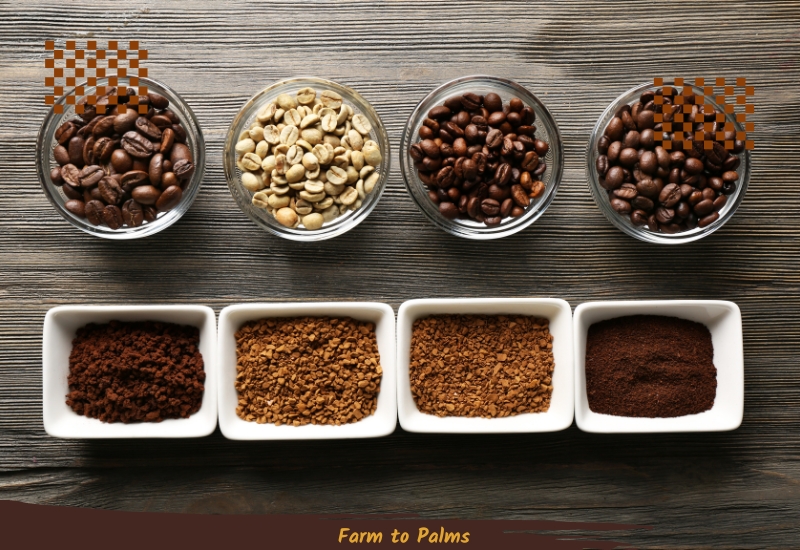
Coffee connoisseurs often seek out distinctive flavors in their brew, and among the myriad of options available, three types of coffee beans have garnered acclaim for their exceptional taste profiles:
Robusta Coffee
Prevalent in Vietnam, Robusta beans are cherished for their unique non-acidic taste and notable aroma. These beans contain a relatively high caffeine content, producing a robust and potent coffee. While Robusta is a favorite in Vietnam, its robustness may cater to something other than the international palate, as some find it too intense.
Arabica Coffee
Arabica stands out as a specialty coffee variety cultivated extensively in mountainous regions, with Cầu Đất in Đà Lạt being particularly renowned. This bean has won over many Vietnamese coffee drinkers, especially women, and aligns with the international preference for a slightly acidic and richly aromatic cup of coffee.
Culi Coffee
Often hailed as the finest among whole and ground coffee beans, Culi offers an unforgettable experience with its sharp bitterness, high caffeine concentration, and full-bodied flavor. It’s a taste that leaves a lasting impression on those who appreciate a bold coffee experience.
The blend of Arabica and Robusta coffee

Due to distinct flavor profiles and processing methods, combining Arabica and Robusta beans achieves a harmonious balance in both taste and aroma.
The fragrant notes of Arabica blend seamlessly with the rich intensity of Robusta, crafting an impeccable coffee that caters to global palates.
For those who favor a pronounced bitterness, a 30% Arabica and 70% Robusta blend is recommended to capture the optimum aroma and taste. Conversely, if a milder, slightly acidic flavor is preferred, a composition of 70% Arabica and 30% Robusta should be considered to enjoy a delightful, aromatic beverage.
How to Store Coffee Beans
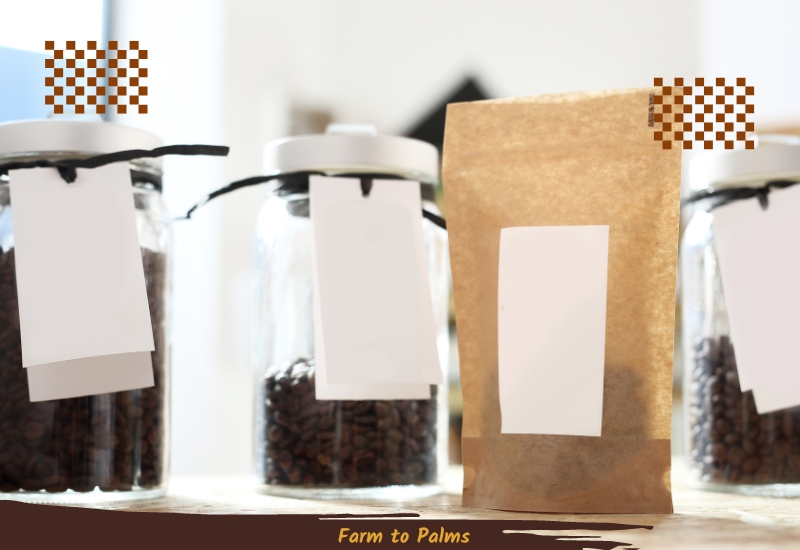
For unroasted coffee beans:
- Store the coffee beans in a mesh bag.
- Keep in a cool, well-ventilated area with minimal wind exposure.
For roasted coffee beans:
- Allow the beans to rest for 24 hours post-roasting to absorb air and produce carbon dioxide, enriching the flavor.
- It is recommended to use roasted and ground coffee within 14 days to maintain optimal aroma and taste.
- Once burned, store the coffee in an airtight container or a sealed zipper bag away from direct sunlight.
- Ensure the coffee is not frequently exposed to air, which can degrade the flavor.
How do I choose the right kind of coffee beans for a recipe?
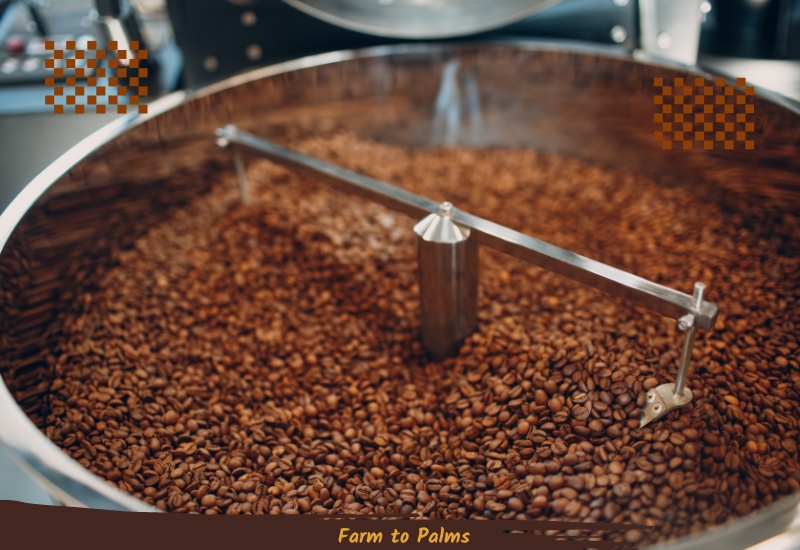
The optimal coffee bean variety for culinary applications hinges on the desired flavor outcome. Coffee beans with distinct taste profiles can enhance various recipes, from confections to marinades and baked creations. When determining which coffee bean to utilize, it is prudent to consider how the roast level—light, medium, or dark—impacts the bean’s inherent taste characteristics.
Light Roast Coffee Beans
Characterized by a minimal roasting duration, light roast beans preserve a greater extent of their original essence. Typically exhibiting fruity or citrus undertones, these beans boast a pronounced acidity and a higher caffeine concentration. For recipes or beverages where a subtle, refined flavor is paramount, opt for light roast beans from the Arabica or Excelsa species to accentuate the nuanced taste.
Medium Roast Coffee Beans
With an escalation in roasting temperatures, there’s a corresponding reduction in the beans’ acidity, resulting in a more moderate flavor profile. Medium roasts strike an elegant balance, making them an exemplary choice for daily brewed coffee. They harmonize exceptionally with Arabica and Excelsa beans, offering a well-rounded sensory experience.
Dark Roast Coffee Beans
Dark roast beans are the quintessential selection to infuse your culinary creations with a profound, robust essence. Particularly compatible with the Arabica variety, these beans are favored for their contribution to the intensity of espresso and as a vital ingredient in an array of recipes. Their potent nature can render more bitter beans, such as Robusta or Liberica, more agreeable in taste.
What’s the best way to brew coffee beans?
The art of coffee extraction offers a spectrum of methodologies, each capable of yielding distinct taste and textural nuances in the final brew. Mastery of these techniques enables a connoisseur to craft exceptional coffee cups or enhance culinary creations for dinner and dessert courses.
Auto-drip/Pour-over

Prevalent among brewing techniques, the drip method is distinguished by its reliance on precise water temperature and controlled flow rate. This precision influences the strength and subtlety of the coffee’s flavor profile, whether utilizing an automated drip machine or a manual pour-over apparatus.
Cold Brew

Cold brewing is an exemplary choice for enthusiasts seeking a beverage with reduced acidity and a smooth, robust essence. This technique eschews heat, allowing a protracted extraction that imparts a mellow yet full-bodied character, perfect for iced coffee preparations.
French Press
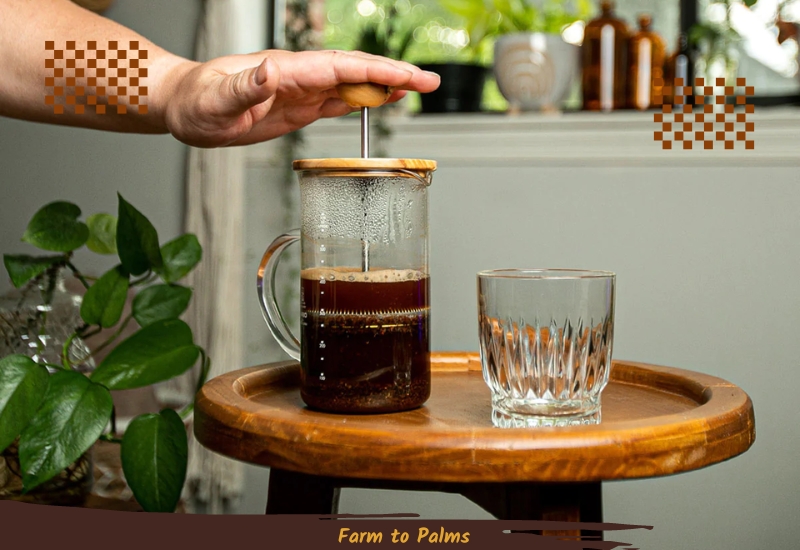
Esteemed for its immersion process, the French press method excels in extracting a profound flavor from coffee beans, particularly when preparing individual servings. In contrast to the brief contact time of drip brewing, the prolonged immersion in hot water with the French press method culminates in a beverage with a potent and rich flavor profile.
Does the grind type make a difference?

The selection of grind size plays a pivotal role in sculpting the taste nuances of your coffee. Equipped with a quality coffee grinder, you have the luxury of tailoring the grind to complement the coffee bean variety and the brewing technique of your choice.
Fine Grinds
Optimal for expeditious, pressurized brewing methods such as espresso, a fine grind is essential. The brief water contact necessitates a larger surface area, which fine grinds provide, to ensure thorough extraction.
Medium Grinds
Medium grinds are the ideal selection when seeking a robust and smooth brew. This grind size suits pour-over techniques and standard auto-drip coffee machines. Delve deeper into the distinctions between pour-over and drip coffee to refine your brewing practices.
Coarse Grinds
For a more elongated exposure to water, as required in methods like a French press or cold brew, coarse grinds are the preference. Compared to finer grinds, their reduced surface area demands a longer steeping time to achieve the desired extraction.
An adaptable grinding appliance is indispensable to attain the grind that matches your taste profile consistently. The KitchenAid® Burr Coffee Grinder stands out with its 70 precise settings, enabling you to engineer your coffee from a light, delicate flavor to a dense, rich bouquet.
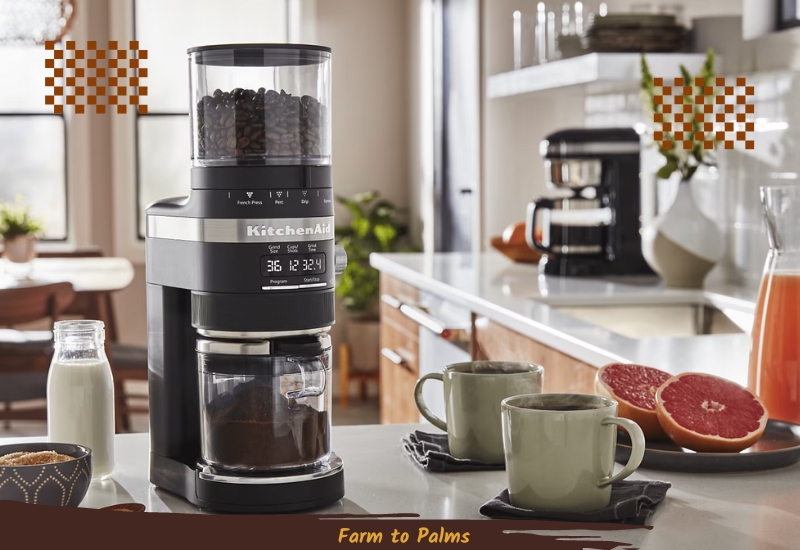
Conclusion
Discover a world of exquisite and renowned coffee flavors, and you will find the perfect coffee that satisfies your taste and complements moments with loved ones and friends.
Farm to Palms proudly offers a curated selection of premium, competitively priced coffee beans sourced directly from esteemed global producers.
Hesitate no more and visit Farm to Palms supermarket for an in-person shopping experience, or utilize our app store for the convenience of placing an order, allowing you to indulge in a self-crafted cup of coffee ever

